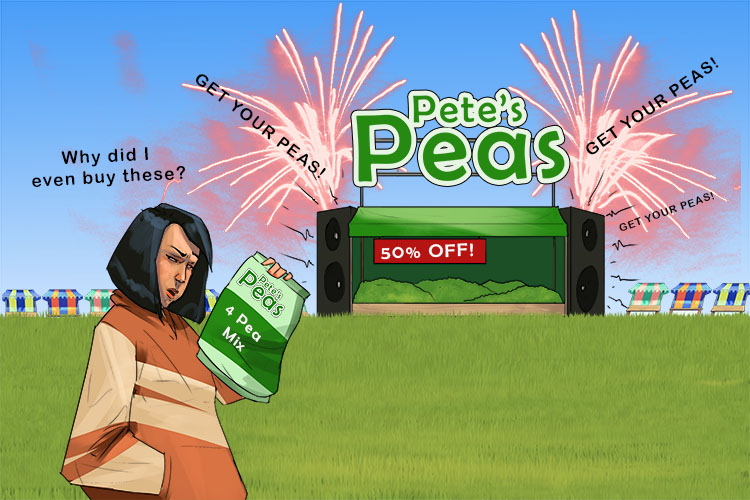marketing mix – the combination of factors that can be controlled by a company to influence consumers to purchase its products
Note: The marketing mix is also known as the 'four P's' to represent the four areas of marketing activities: Price, product, promotion and place.
To remember what market mix means use the following mnemonic:
At the market, I bought a mix (marketing mix) of four types of peas (four P's). The farmer used a combination of factors to influence consumers to purchase his products.

The marketing mix is a framework used by businesses to plan and execute their marketing strategies. It is made up of four elements, known as the 4 Ps: product, price, place, and promotion.
- Product: The product is the good or service that the business is offering. It is important to consider the product’s features, benefits and quality when developing the marketing mix
- Price: The price is the amount of money that customers will pay for the product. It is important to set a price that is competitive and that will generate profit for the business.
- Place: The place is where the product is sold. It is important to choose distribution channels that will make the product accessible to target customers.
- Promotion: Promotion is the way that the business communicates the value of its product to potential customers. It can include advertising, public relations and sales promotions.
The 4 Ps of the marketing mix are interrelated and should be considered together when developing a marketing strategy. For example, the price of a product may affect the type of promotion that is used. By carefully considering the elements of the marketing mix, business can create a marketing strategy that is effective and efficient.
In addition to the 4 Ps, some marketers also include additional elements in the marketing mix, which are:
- People: The people involved in the marketing process, such as sales representatives, customer service representatives, social media managers.
- Process: The way that the business delivers its products or services to customers.
- Physical evidence: The tangible aspects of the business, such as its website, stores, and packaging.
These additional elements can be important in creating a positive customer experience and driving sales.




